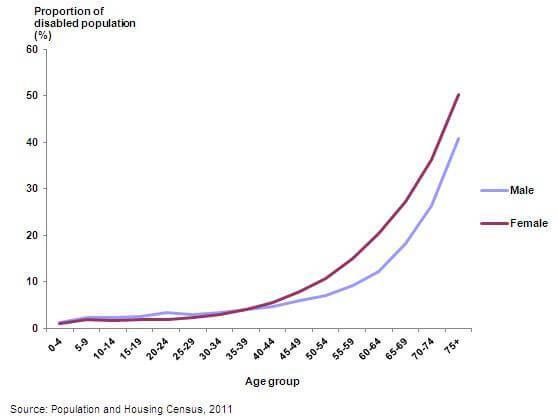Turkey’s disabled sidelined by sidewalks
 In 1989, the United Nations Development Programme (UNDP), an organization seemingly devoted to British English, declared July 11 World Population Day, a day to focus on population issues. They usually choose a different leitmotif each year.
In 1989, the United Nations Development Programme (UNDP), an organization seemingly devoted to British English, declared July 11 World Population Day, a day to focus on population issues. They usually choose a different leitmotif each year.This year’s theme is Vulnerable Populations in Emergencies, especially women and girls. The United Nations Population Fund underlines that “the world is seeing a record number of people displaced by crises – some 60 million according to the latest U.N. figures.” Women and girls’ specific needs are too often ignored in humanitarian responses. For example, one in five are pregnant during conflicts and humanitarian disasters. They also “face much greater risk of abuse, sexual exploitation, violence and forced marriage.”
Of the 60 million displaced people, over 4 million are from Syria, with nearly half living in Turkey at the moment. Therefore, when I saw a news bulletin from the Turkish Statistical Institute (TÜİK) on July 6 (better be early than late) to commemorate World Population Day, I eagerly clicked on the link, hoping to find useful statistics on the status of Syrian women in Turkey.
Apparently, TÜİK did not know about this year’s sub-theme: Using the definition of vulnerability in the UNDP’s 2014 Human Development Report (HDR), they note that people with disabilities are especially vulnerable, presenting some interesting statistics from their 2011 Population and Housing Census.
You may think that there should not be more than a couple of million people with disabilities in Turkey because you rarely see them around. In fact, there are nearly 5 million people with disabilities in the country, making up 6.6 percent of the population. You don’t see them because they cannot navigate the streets. Even if sidewalks were not made of uneven stones, or electric poles were not getting in the way, they are “invaded” by cars.
It is therefore no surprise that people with disabilities have around half the labor force participation rate of the overall population, with the percentage being more or less equal for both men and women. Interestingly enough, in other areas, women with disabilities seem to be more at a disadvantage than men with disabilities.

For starters, the percentage of women with disabilities is much higher than men. This may be a statistical artifact of women living longer than men, especially since the gap widens with age, but women with disabilities also have very low literacy and lower education rates compared to the overall female population. These rates are naturally lower for men with disabilities as well, but not nearly as much.
As TÜİK notes in its bulletin as well, the 2014 HDR defines “the concept of human vulnerability to describe the prospects of eroding people’s capabilities and choices.” In Turkey, even in cases where capabilities and choices have not been eroded by policy decisions, policymakers are not doing much to alleviate them, either – even though there are some very easy fixes, such as making our cities more disability-friendly.
I am not very hopeful. After all, even the statistical agency responsible for providing policymakers and politicians the data necessary for making the right policy decisions is not aware of the World Population Day theme. As a well-known Turkish proverb goes, “a fish rots from the head down.”










